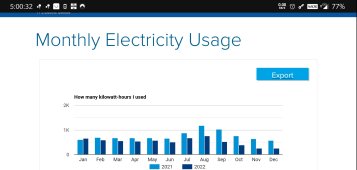My DIY system was commissioned mid Oct 22. Everything except the electric dryer and stove are fed from the AIO, which is also connected to grid. Dryer runs 3-5 cycles per week, stove is rarely used since I cook with the induction top, convection oven and pressure cooker primarily. I haven't been contacted, yet..? I'm working on a DIY ground mount that will be much more visible than 18 panels on the roofs. If they ever give me grief I'll politely ask them to disconnect my service and quickly purchase more batteries and a XW 6848...
Wow December sucked from a generation standpoint.




